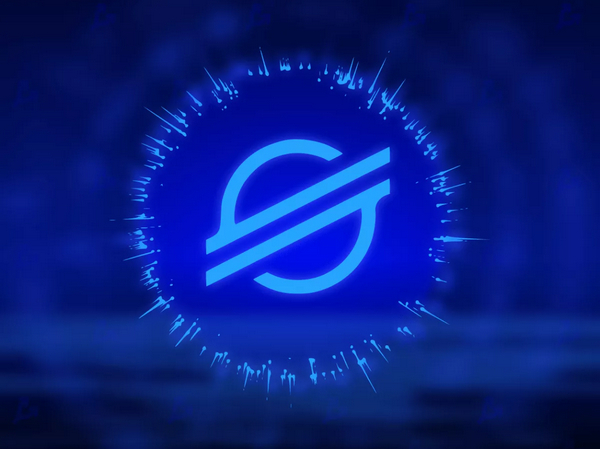-
 Bitcoin
Bitcoin $103,440.5079
-1.47% -
 Ethereum
Ethereum $2,599.8293
-4.89% -
 Tether USDt
Tether USDt $1.0000
-0.01% -
 XRP
XRP $2.5581
-1.58% -
 Solana
Solana $177.1881
-3.82% -
 BNB
BNB $652.6285
-2.72% -
 USDC
USDC $0.9999
-0.01% -
 Dogecoin
Dogecoin $0.2341
-3.55% -
 Cardano
Cardano $0.7998
-4.86% -
 TRON
TRON $0.2766
1.32% -
 Sui
Sui $3.9225
-4.43% -
 Chainlink
Chainlink $17.0202
-4.30% -
 Avalanche
Avalanche $25.2064
-3.73% -
 Stellar
Stellar $0.3046
-4.14% -
 Shiba Inu
Shiba Inu $0.0...01581
-4.62% -
 Hedera
Hedera $0.2072
-5.09% -
 Hyperliquid
Hyperliquid $25.0243
-5.16% -
 Toncoin
Toncoin $3.2646
-4.81% -
 UNUS SED LEO
UNUS SED LEO $8.8104
1.16% -
 Bitcoin Cash
Bitcoin Cash $403.7050
-2.86% -
 Polkadot
Polkadot $5.0100
-4.87% -
 Litecoin
Litecoin $100.1824
-4.46% -
 Pi
Pi $0.9140
-23.46% -
 Monero
Monero $342.3810
0.19% -
 Pepe
Pepe $0.0...01387
-7.73% -
 Bitget Token
Bitget Token $4.7282
-2.30% -
 Dai
Dai $0.9998
-0.03% -
 Ethena USDe
Ethena USDe $1.0005
-0.05% -
 Uniswap
Uniswap $6.6089
-9.88% -
 Bittensor
Bittensor $452.6068
-3.72%
What is the use of XLM coin? The concept, value and practical application of XLM coin
XLM (Stellar Lumens), the native cryptocurrency of the Stellar blockchain, serves multiple functions including transaction fees, liquidity provision, interoperability facilitation, and anchoring fiat currencies on the network.
Oct 17, 2024 at 09:29 pm

What is the Use of XLM Coin?
1. Introduction to XLM Coin
XLM (Stellar Lumens) is the native cryptocurrency of the Stellar blockchain, a decentralized network that facilitates cross-border transactions and enables interoperability between different cryptocurrencies.
2. Concept of XLM Coin
XLM serves several key functions on the Stellar network:
a. Transaction Fees: XLM is required to pay transaction fees on the Stellar blockchain. These fees are extremely low, typically less than a fraction of a penny.
b. Liquidity: XLM is used as a bridge currency for trading between different cryptocurrencies. It provides liquidity and reduces the need for multiple intermediaries.
c. Interoperability: XLM bridges the gap between different currencies and cryptocurrencies. It allows for the seamless conversion of assets, such as fiat currencies, stablecoins, and other cryptos.
d. Anchors: XLM is used to anchor fiat currencies on the Stellar network. Anchors are trusted entities that issue and maintain fiat currencies as digital assets on the blockchain.
3. Value of XLM Coin
The value of XLM coin is determined by:
a. Network Utility: As the Stellar blockchain gains adoption, the demand for XLM increases, as it is essential for transactions and liquidity.
b. Interoperability: XLM's cross-border capabilities and interoperability with other assets enhance its utility and value.
c. Limited Supply: XLM has a fixed total supply of 50 billion coins, which contributes to its scarcity and potential value appreciation.
4. Practical Applications of XLM Coin
XLM has various practical applications, including:
a. Cross-border Payments: Stellar enables fast, low-cost cross-border transactions that bypass traditional banking systems.
b. Remittances: XLM is used for sending remittances to developing countries, offering a more efficient and affordable alternative to traditional methods.
c. Stablecoin Settlement: XLM is used as a settlement currency for stablecoins, such as Circle's USDC, providing liquidity and stability to the stablecoin ecosystem.
d. Decentralized Finance (DeFi): XLM is utilized in DeFi applications on the Stellar blockchain, such as liquidity pools and yield farming.
e. Micropayments: XLM's low transaction fees enable micropayments to be sent and received with ease.
Disclaimer:info@kdj.com
The information provided is not trading advice. kdj.com does not assume any responsibility for any investments made based on the information provided in this article. Cryptocurrencies are highly volatile and it is highly recommended that you invest with caution after thorough research!
If you believe that the content used on this website infringes your copyright, please contact us immediately (info@kdj.com) and we will delete it promptly.
- Arctic Pablo Coin (APC) is the Next Big Meme Coin with Explosive Presale Potential
- 2025-05-15 00:25:13
- Bitcoin Solaris Enters Phase 3 of Its Public Token Presale, Prepares to Launch Nova App
- 2025-05-15 00:25:13
- XRP: Can the Momentum Continue Above Resistance?
- 2025-05-15 00:20:12
- The Sui blockchain SUI $3.65 2024-05-14
- 2025-05-15 00:20:12
- Tether Has Just Invested Nearly Half a Billion Dollars in Bitcoin to Launch a New Institutional Management Company
- 2025-05-15 00:15:13
- From Unlock to Utility: The Triggers Behind EIGENLayer Price Momentum
- 2025-05-15 00:15:13
Related knowledge

What is Ethereum’s Slashing mechanism and how to punish malicious behavior?
Feb 20,2025 at 03:08am
Key PointsOverview of slashingDifferent types of slashing in EthereumIncentives and consequences of slashingIdentifying and reporting slashed validatorsOngoing discussions and potential improvementsEthereum's Slashing Mechanism: Punishing Malicious BehaviorEthereum's slashing mechanism is an essential tool for ensuring network security and punishing mal...

What is the verifier node of Ethereum and how to become a verifier?
Feb 19,2025 at 06:00pm
The Verifier Node of Ethereum: A Comprehensive GuideKey Points:What is a Verifier Node?How to Become a Verifier NodeResponsibilities and Rewards of a Verifier NodeMinimum Requirements for Becoming a Verifier NodePotential Difficulties in Running a Verifier Node1. What is a Verifier Node?A Verifier Node is an independent entity on the Ethereum network th...

What is Ethereum’s staking, and how to participate and earn money?
Feb 19,2025 at 04:37pm
Key Points:Understanding Ethereum's Staking MechanismSteps to Participate in StakingBenefits and Rewards of StakingSecurity and Risk ConsiderationsTechnical Requirements and Hardware OptionsPotential Challenges and Troubleshooting TipsFAQs on Ethereum StakingWhat is Ethereum's Staking?Proof-of-Stake (PoS) is a consensus mechanism used in blockchain netw...

What is Ethereum’s DAO (Decentralized Autonomous Organization) and how does it work?
Feb 20,2025 at 03:12am
Key PointsDefinition and Structure of a DAOGovernance and Decision-Making in DAOsBenefits and Use Cases of DAOsChallenges and Limitations of DAOsWhat is Ethereum's DAO (Decentralized Autonomous Organization) and How Does It Work?Definition and Structure of a DAOA Decentralized Autonomous Organization (DAO) is an innovative governance and management fram...

What is Ethereum's multi-signature wallet and how to improve security?
Feb 20,2025 at 02:18pm
Key Points:Understanding the Concept of a Multi-Signature WalletBenefits and Drawbacks of Multisig WalletsRequirements for Setting Up a Multisig WalletStep-by-Step Guide to Generating a Multisig WalletImplementing Strategies for Enhanced Security1. Understanding the Concept of a Multi-Signature WalletA multi-signature (multisig) wallet in the Ethereum e...

What is Ethereum's oracle and how to provide data for smart contracts?
Feb 21,2025 at 01:30am
Key Points:Understanding the concept of oracles in EthereumExploring different types of oraclesDetailed guide on how to provide data for smart contractsAddressing potential challenges and considerationsWhat is Ethereum's Oracle?Oracles are crucial components in the Ethereum ecosystem, enabling smart contracts to access real-world data and off-chain even...

What is Ethereum’s Slashing mechanism and how to punish malicious behavior?
Feb 20,2025 at 03:08am
Key PointsOverview of slashingDifferent types of slashing in EthereumIncentives and consequences of slashingIdentifying and reporting slashed validatorsOngoing discussions and potential improvementsEthereum's Slashing Mechanism: Punishing Malicious BehaviorEthereum's slashing mechanism is an essential tool for ensuring network security and punishing mal...

What is the verifier node of Ethereum and how to become a verifier?
Feb 19,2025 at 06:00pm
The Verifier Node of Ethereum: A Comprehensive GuideKey Points:What is a Verifier Node?How to Become a Verifier NodeResponsibilities and Rewards of a Verifier NodeMinimum Requirements for Becoming a Verifier NodePotential Difficulties in Running a Verifier Node1. What is a Verifier Node?A Verifier Node is an independent entity on the Ethereum network th...

What is Ethereum’s staking, and how to participate and earn money?
Feb 19,2025 at 04:37pm
Key Points:Understanding Ethereum's Staking MechanismSteps to Participate in StakingBenefits and Rewards of StakingSecurity and Risk ConsiderationsTechnical Requirements and Hardware OptionsPotential Challenges and Troubleshooting TipsFAQs on Ethereum StakingWhat is Ethereum's Staking?Proof-of-Stake (PoS) is a consensus mechanism used in blockchain netw...

What is Ethereum’s DAO (Decentralized Autonomous Organization) and how does it work?
Feb 20,2025 at 03:12am
Key PointsDefinition and Structure of a DAOGovernance and Decision-Making in DAOsBenefits and Use Cases of DAOsChallenges and Limitations of DAOsWhat is Ethereum's DAO (Decentralized Autonomous Organization) and How Does It Work?Definition and Structure of a DAOA Decentralized Autonomous Organization (DAO) is an innovative governance and management fram...

What is Ethereum's multi-signature wallet and how to improve security?
Feb 20,2025 at 02:18pm
Key Points:Understanding the Concept of a Multi-Signature WalletBenefits and Drawbacks of Multisig WalletsRequirements for Setting Up a Multisig WalletStep-by-Step Guide to Generating a Multisig WalletImplementing Strategies for Enhanced Security1. Understanding the Concept of a Multi-Signature WalletA multi-signature (multisig) wallet in the Ethereum e...

What is Ethereum's oracle and how to provide data for smart contracts?
Feb 21,2025 at 01:30am
Key Points:Understanding the concept of oracles in EthereumExploring different types of oraclesDetailed guide on how to provide data for smart contractsAddressing potential challenges and considerationsWhat is Ethereum's Oracle?Oracles are crucial components in the Ethereum ecosystem, enabling smart contracts to access real-world data and off-chain even...
See all articles
























































































